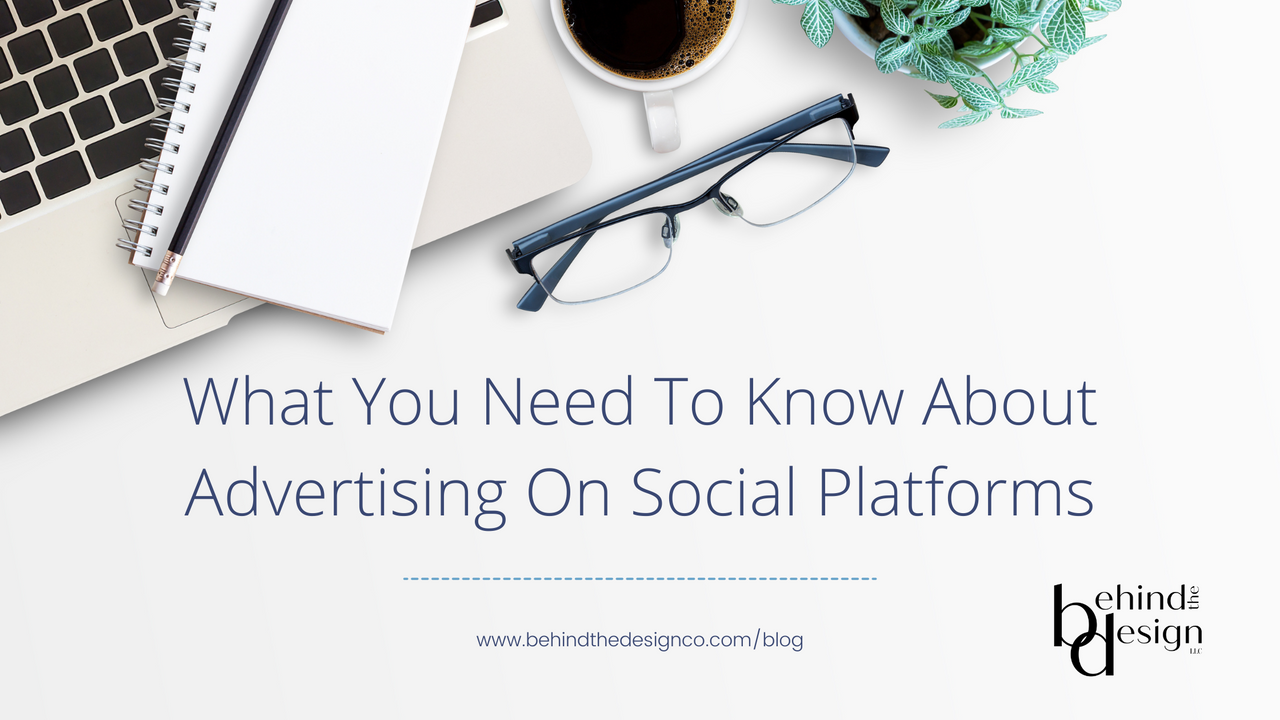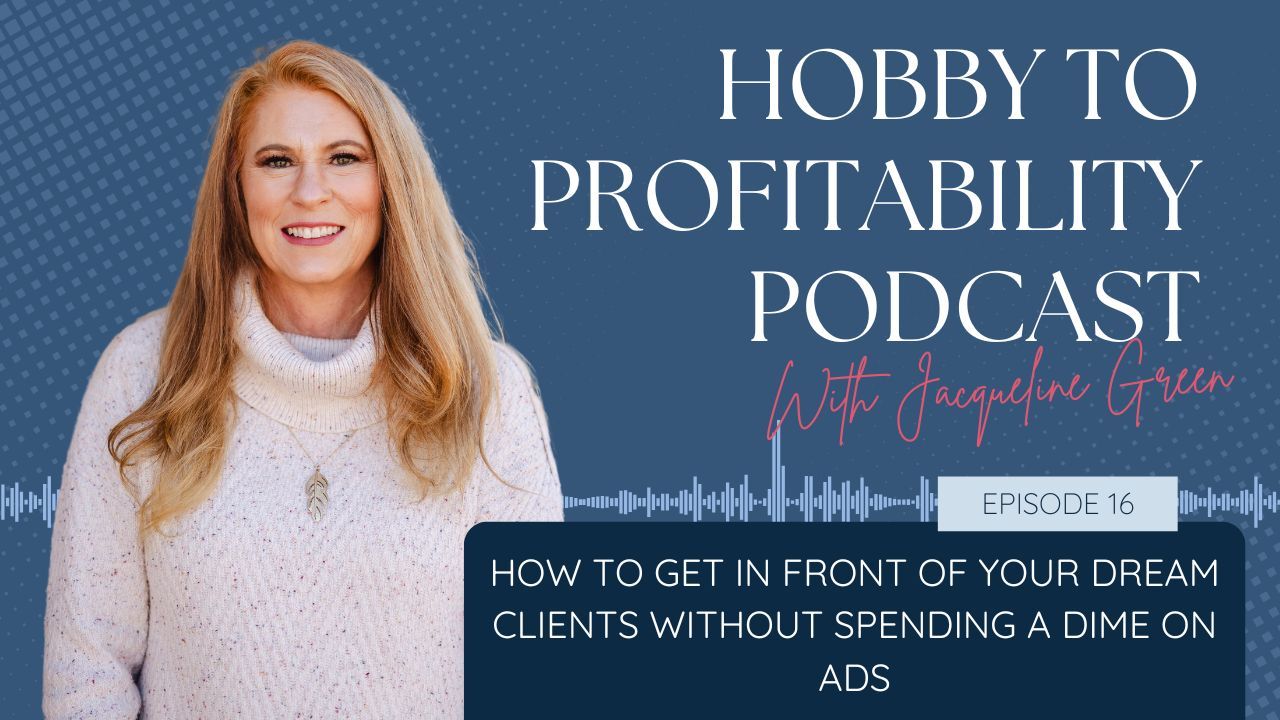What You Need To Know About Advertising On Social Platforms
Dec 03, 2021
Ads, ads, and you guessed it… more ads! If you’ve ever scrolled through Instagram long enough, you’ll realize that about every 5 posts from people you follow, there will be one “Sponsored” post. Care to guess what this “Sponsored” post means, and why it happens to be about Joanna Gaines’ latest book on spaces you’ll never want to leave? Gosh, it’s like they know exactly what you like! Almost like… you’re part of their target audience.
If you guessed advertising on social media, then you my friend are correct. Back in the early 2000s, social media was even more organic than any natural wood finish you can think of. It wasn’t until about 2006 that Facebook announced its first ad deal with JP Morgan Chase to promote Chase credit cards. Fast forward a couple of years after that, and now every social platform you can think of like Twitter, YouTube, Instagram, Pinterest, and even Snapchat had the capability to monetize their platforms with display advertising.
But why was social media advertising so incredibly successful?
Simply put, social media platforms provide a higher level of targeted advertising and insight than any other form of traditional media. To help you understand this phenomenon a bit better, let’s compare a television commercial vs. an Instagram ad.
For starters, as soon as you sign up for an Instagram account, the platform now has your name, what you like based on the accounts you follow and engage with, who you know, and even where you live thanks to you tagging your own location, or more accurately, your IP address. This bit of information lets marketers or interior designers looking to expand their leads, know exactly who they want to target, and even people they want to exclude. A TV commercial on the other hand, not so targeted. And yes, they have a general idea of what kind of person watches what kind of channels, but let’s be real, great marketing never became great from general ideas.
So not only is social media advertising incredibly accurate and a great tool to help you find new clients if you can get it right, but it also has no barriers to entry.
What are barriers to entry?
According to Investopedia’s definition, barriers to entry is an economics and business term describing factors that can prevent or impede newcomers into a market or industry sector, and so limit competition. These can include high start-up costs, regulatory hurdles, or other obstacles that prevent new competitors from easily entering a business sector. Barriers to entry benefit existing firms because they protect their market share and ability to generate revenues and profits.
Out of curiosity, have you ever searched how much it costs to run a commercial on TV? Or even the Super Bowl. You honestly, might not even want to know. But for the sake of my argument, here are some numbers:
In 2021, CBS opened the bidding for a 30-second commercial spot for the Super Bowl at *drumroll please* $5.6 million! How considerate of them!
I don’t know about you but even 10% of that is way out of my advertising budget, and that’s the beauty of advertising on social media. The lowest ad you can run on Instagram is literally a dollar a day. Now I’m not saying you should only invest a dollar a day, but the option is nice.
It is much easier to enter and succeed in a market filled with tons of other interior designers if you can bypass the organic approach on social media and go straight to a much larger pool of people within your target audience by running advertisements, without breaking the bank like you would with traditional media.
Since I’ve talked so much about Instagram, it’s only fair that I mention other great social media platforms, so here are three comprehensive articles on how to use LinkedIn to improve your marketing efforts:
- How to Create a Company Page on LinkedIn that will Jumpstart your Marketing Efforts
- 3 Tips to Increase your Company's LinkedIn Followers
- 8 Steps to Improve your LinkedIn Profile for Lead Generation in Your Design Business
I hope that by now you’re beginning to understand why advertising on social media is such a powerful way for any struggling interior designer to generate more business.
Here’s a quick recap on why it’s a great opportunity for your interior design business:
- It’s cost-effective.
- You get to quickly tap into a much larger pool of potential clients.
- You get to choose who sees your ad based on people’s interests, so you’re not just shooting a dart in the dark.
Tips To Help Interior Designers Get Started
Setting A Budget
The first step when setting your social media budget is setting up your budget for all your marketing efforts, not just social media. This includes email marketing, SEO, content marketing, etc. Once you’ve determined this, you can decide what percentage of that total budget you are going to allocate towards social media ads.
- Of their entire digital marketing budget, most companies spend about 15% to 25% on social media marketing efforts, both organic and paid.
How To Target The Right Audience
The first step when targeting your audience is to know who your target audience is! If you haven’t already figured out who your interior design business caters to, you’re going to need to read this:
How to Identify a Target Audience for Increased Profitability
It’s important you figure out who you want to reach, and how you want to reach those people before you start spending any type of money on social media advertising.
Determine What Speaks To Your Audience
I suggest you run some tests before deciding what type of content you want to promote on social media. A good way to do this is by running some A/B tests on your social media accounts.
What is A/B testing?
A/B testing, also known as split testing, is a marketing experiment wherein you split your audience to test a number of variations of a campaign and determine which performs better. In other words, you can show version A of a piece of marketing content to one half of your audience, and version B to another (definition by Hubspot).
Given that on social media you can’t split your audience like you would be able to in email marketing, for instance, you can still do a variation of this experiment.
Here’s an example: Let’s say that I want to promote my SketchUp Pro training. So, in the same month, I’ll create four different content materials for the same product and release each variation once a week on the same day. At the end of the month, I’ll go into my analytics and see which content type performed the best. With this new information, I now have a better idea of the type of content that resonates stronger with my current audience that will also most likely be similar to the future audience I will be targeting.
What Should You Offer Through Advertising
What you decide to offer will mainly depend on the end goal you are trying to achieve. If you want to raise your Brand Awareness (the extent to which consumers are familiar with the distinctive qualities or image of a particular brand of goods or services - definition by Oxford) for example, then your ad campaign is going to look very different from a campaign where the end goal is to make a sale on a product.
- If I’m trying to gain more followers on my account, I might promote the most captivating before and after pictures of a project I’ve worked on. People love transformations, so odds are, they’re going to want to check your profile to see if there’s more where that came from.
- If I’m trying to sell an online training program, for instance, I might choose to share a quick yet informative video teaser of the training program, and promote that!
Regardless of what your goal is with your advertising campaigns, you want to try to be as creative and captivating as possible. Out of the box, high-quality content in your social media advertising efforts is a win-win for everyone involved.
How To Track, Test, and Set Realistic Expectations
Successful advertising campaigns take lots of testing and perseverance. Not every campaign you advertise will be a winner so it’s important to keep track of your efforts and set realistic expectations.
Make sure you are:
- Keeping an excel sheet of your spending so that you don’t go over your advertising budget.
- Comparing and contrasting each advertising campaign. Which ones were more successful, and can you pinpoint why? Try to find similarities and differences in the graphics, post style (static image, multiple images, video, etc.), and copy a.k.a how you wrote the caption; was it funny, did it create fear, was it personal, etc.
- Keeping track of the data and analytics of each campaign. This data will be provided by each social platform you advertise on, so make sure you take advantage of this.
If All Else Fails, Remember This…
“Nobody counts the number of ads you run; they just remember the impression you make.”
– Bill Bernbach
Sign Up for Our Monthly Newsletter
Get helpful career, business, and design tips right in your inbox each month.
At Behind the Design, we are committed to building a stronger design community by reimagining education, training, and support for interior designers. Through our various software training options, educational articles covering everything from leadership to marketing, and soon Continuing educational courses, we are committed to helping you. Join our newsletter to get the latest education and training updates.









